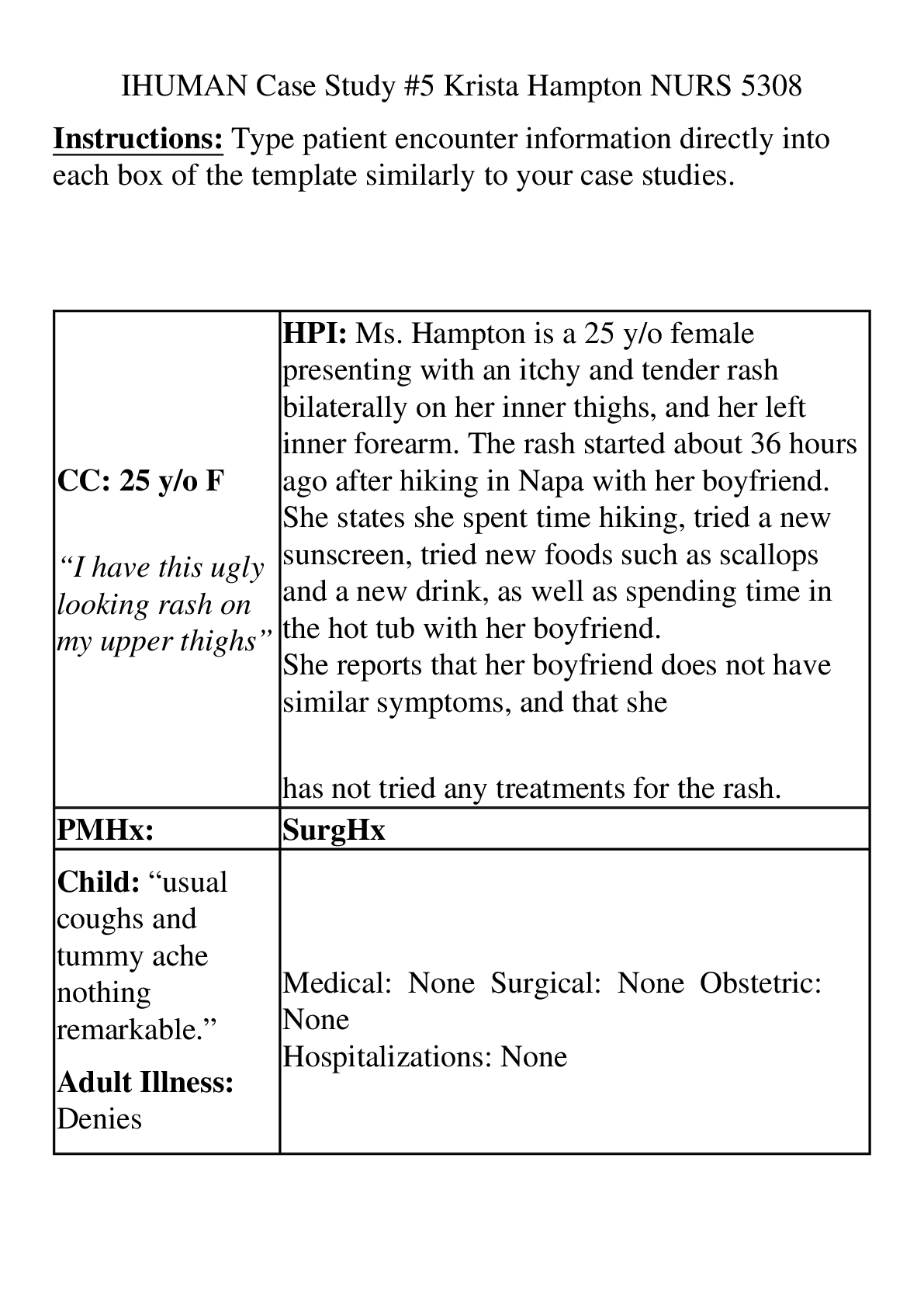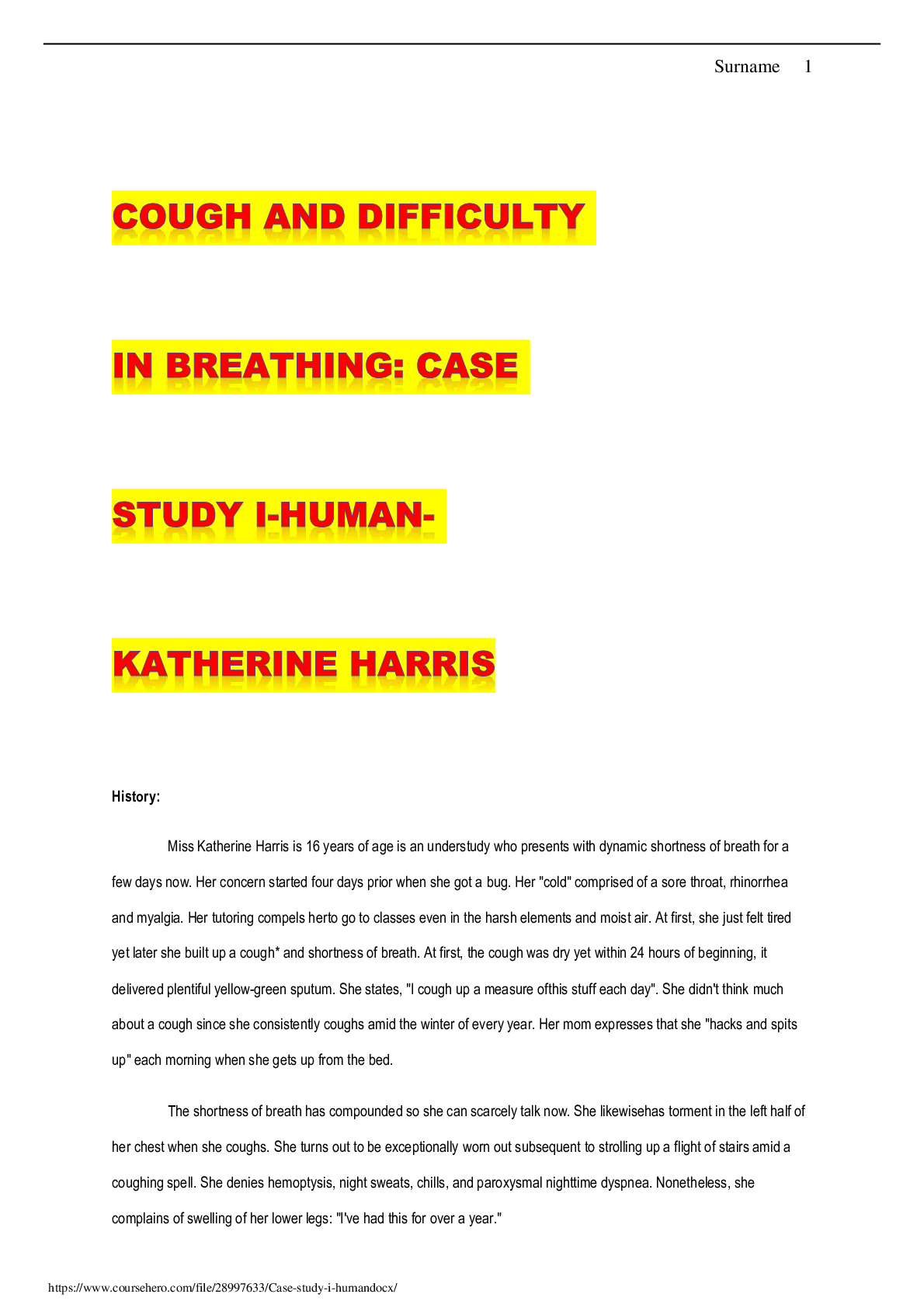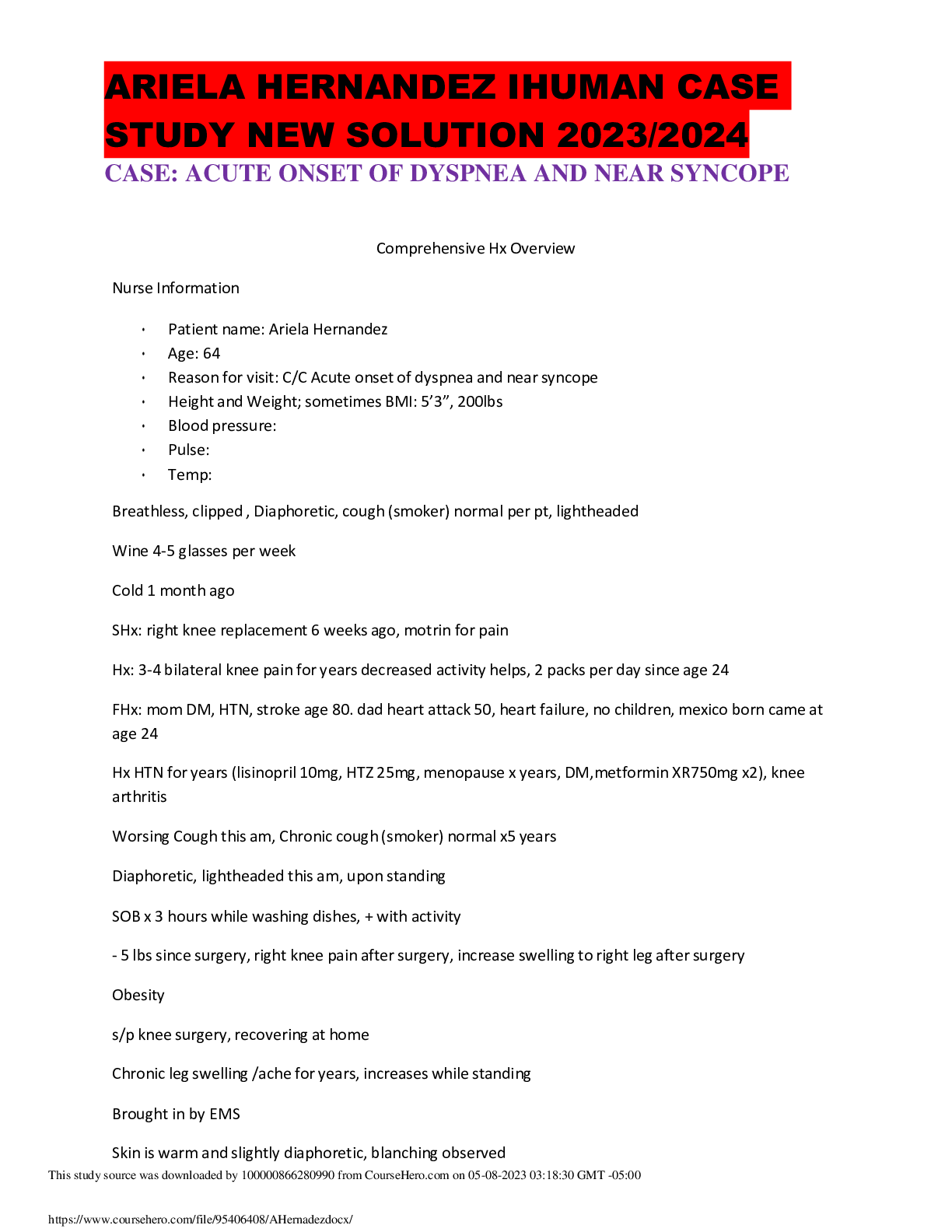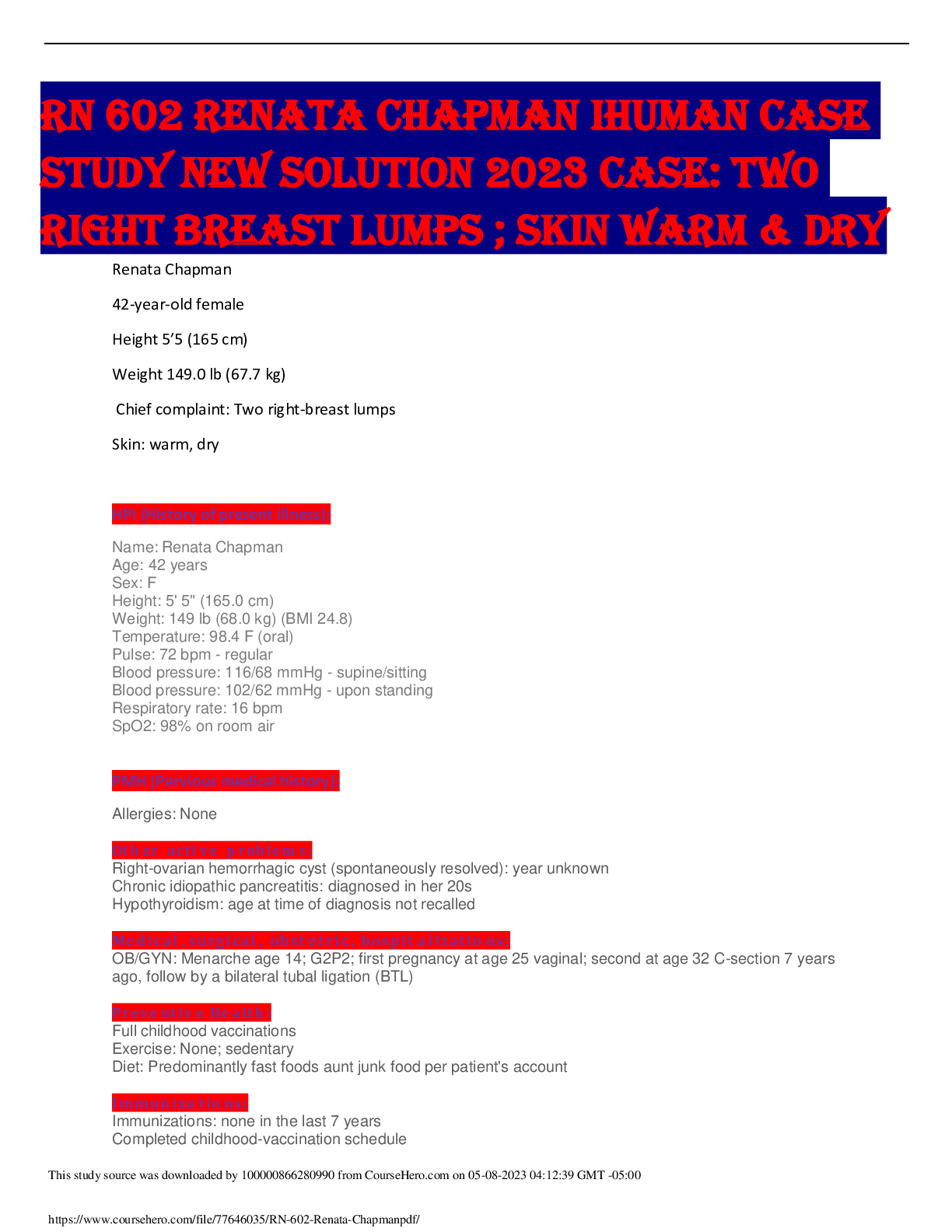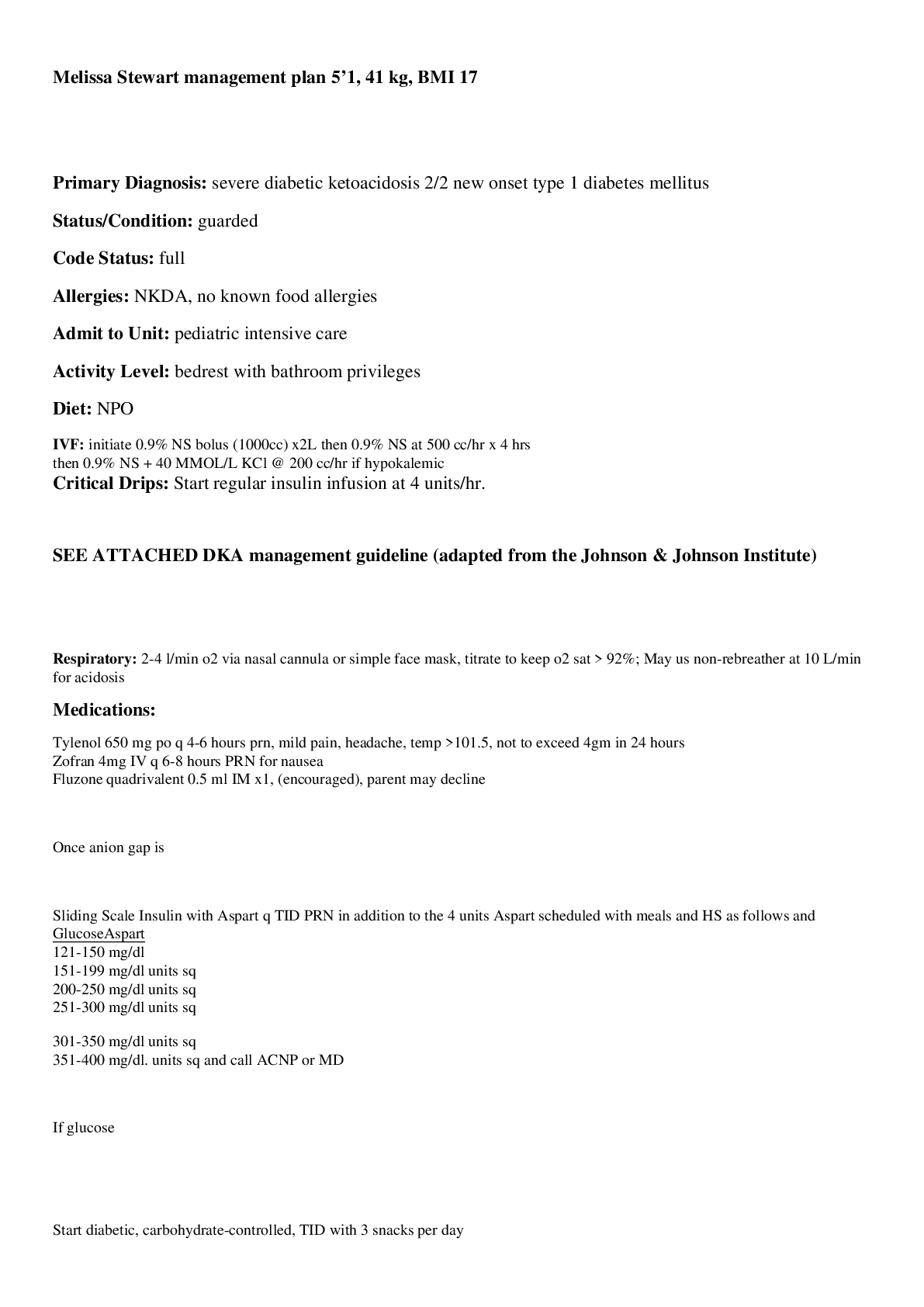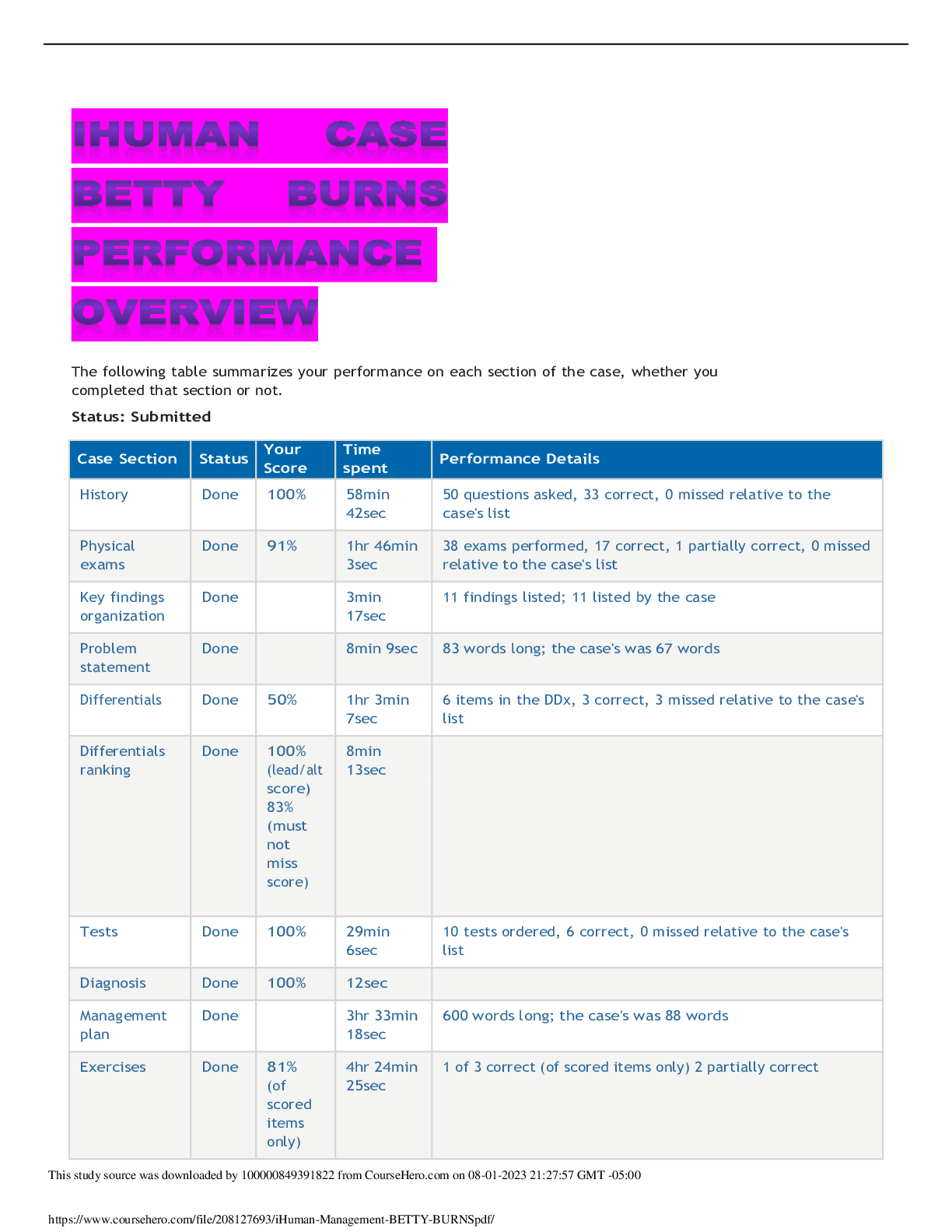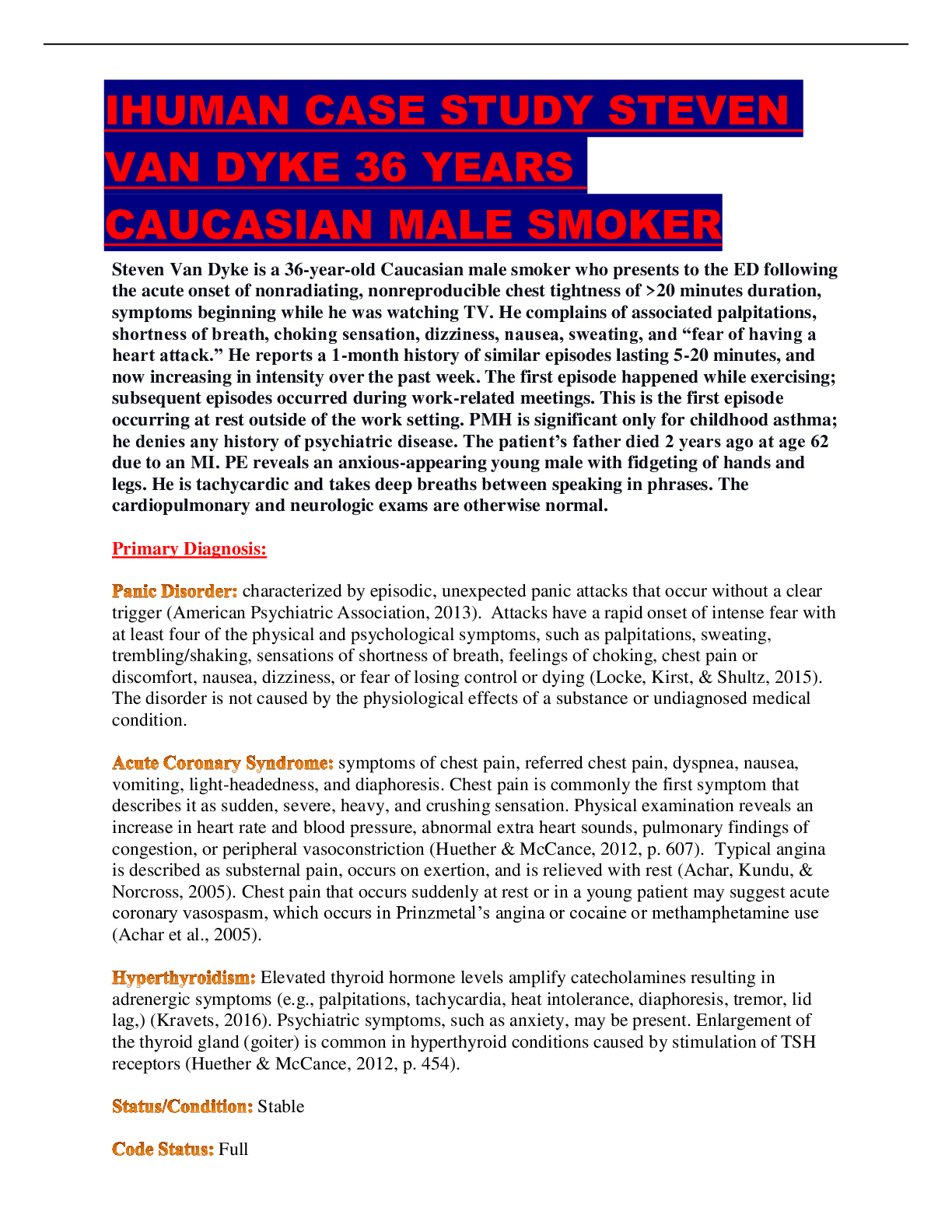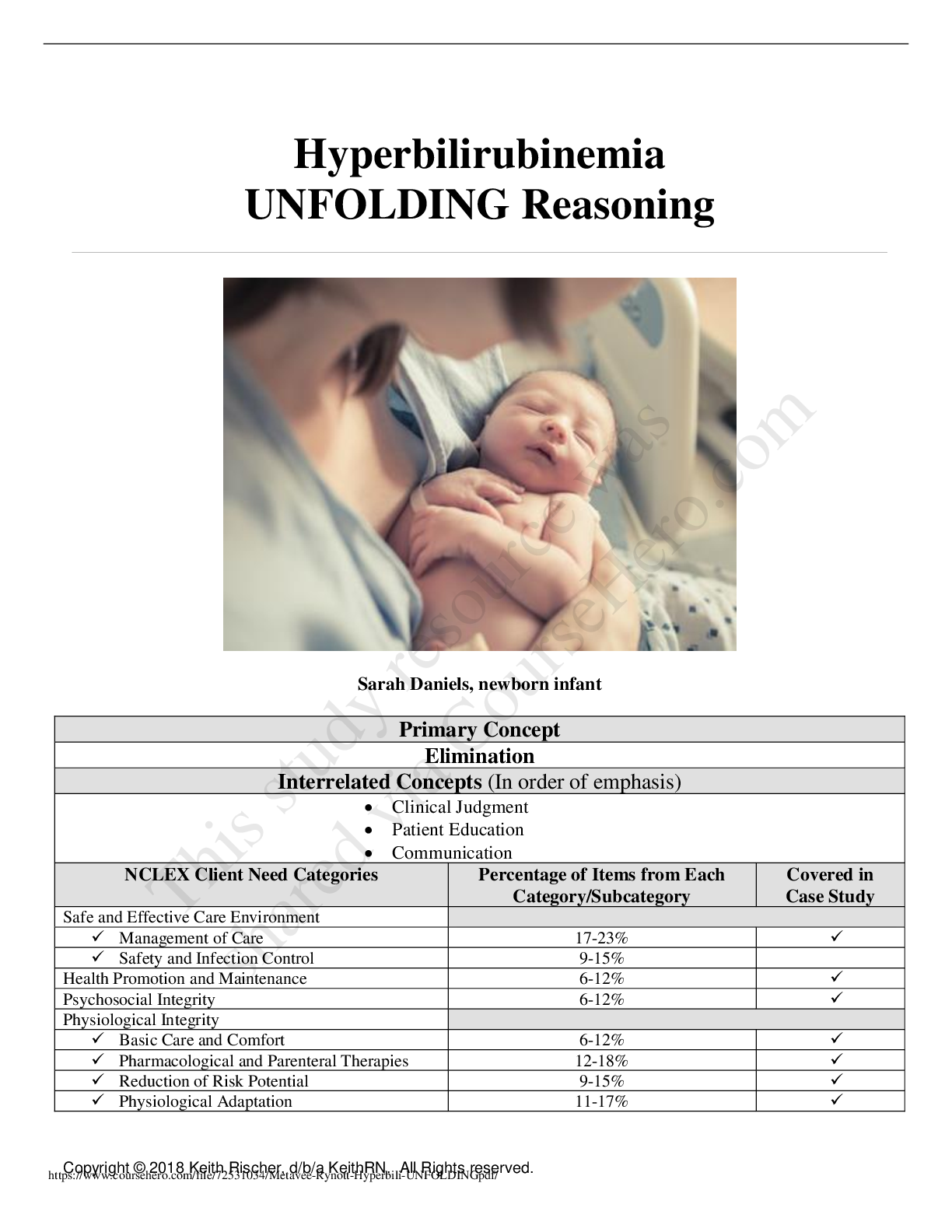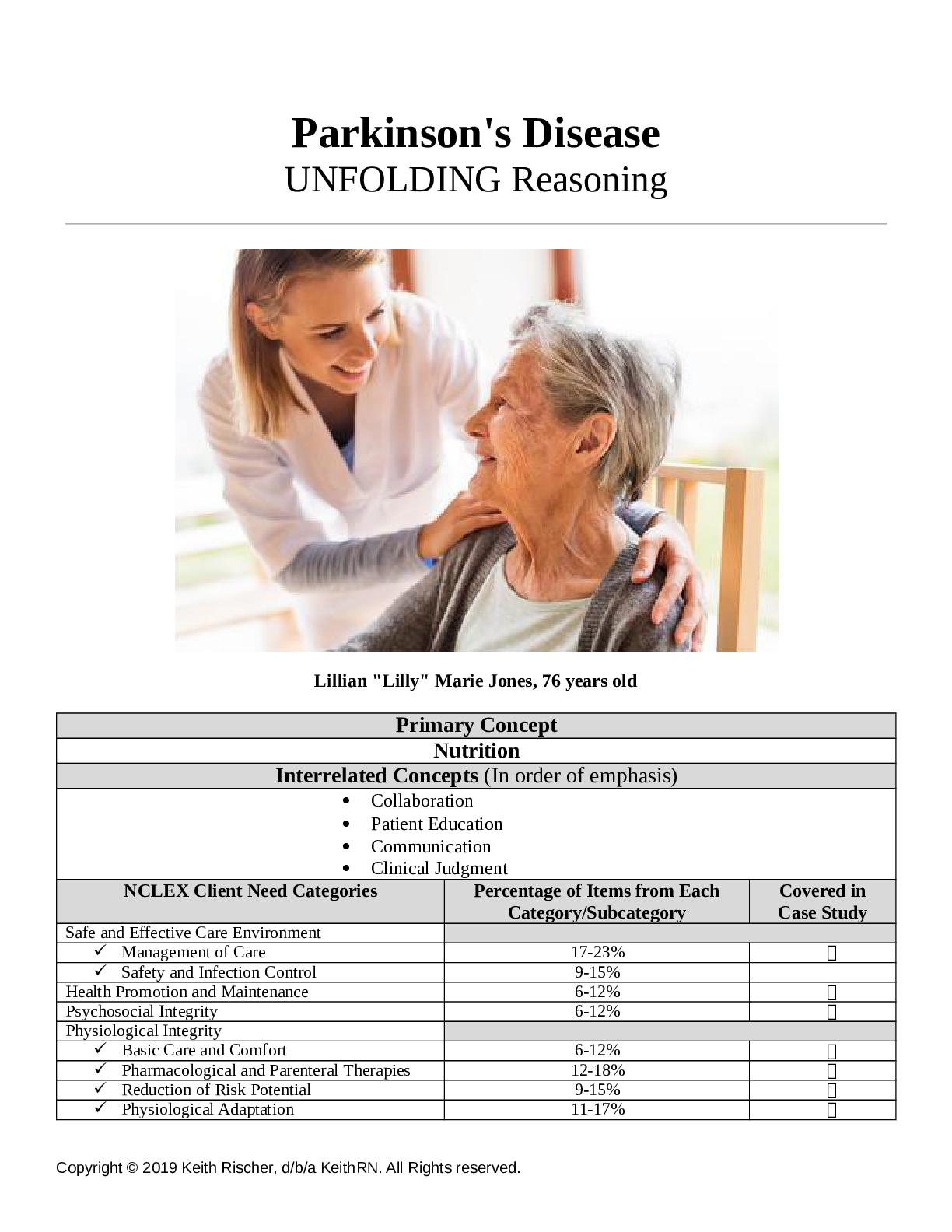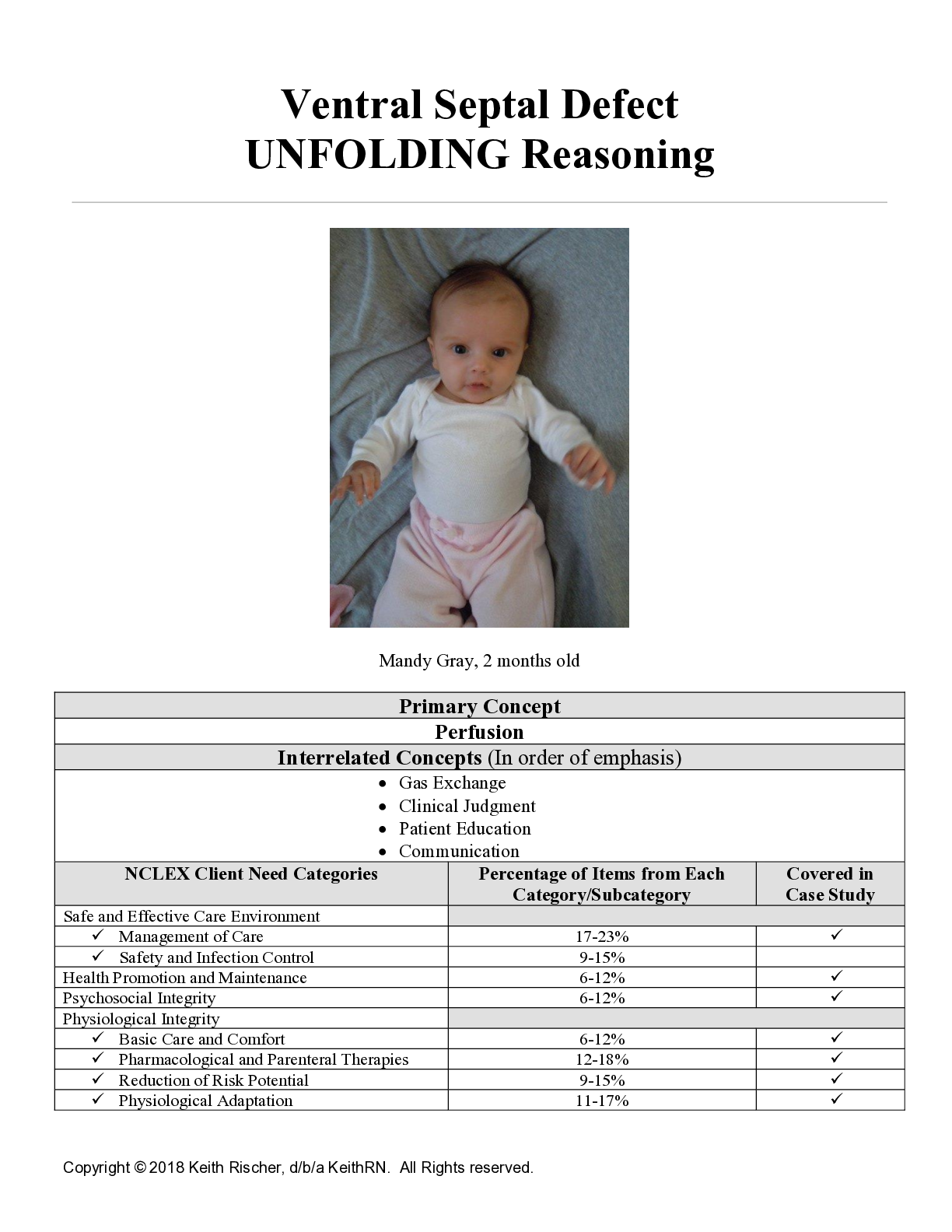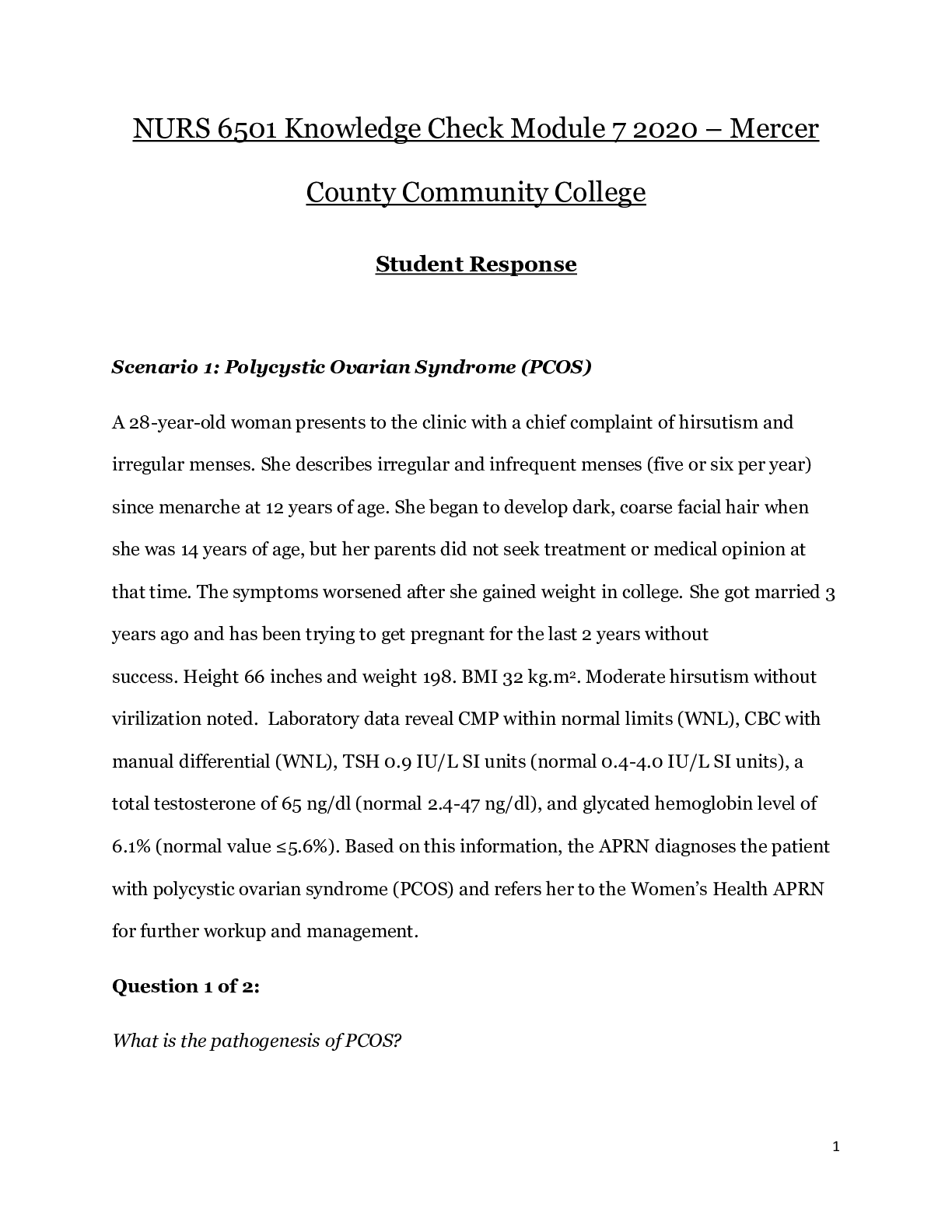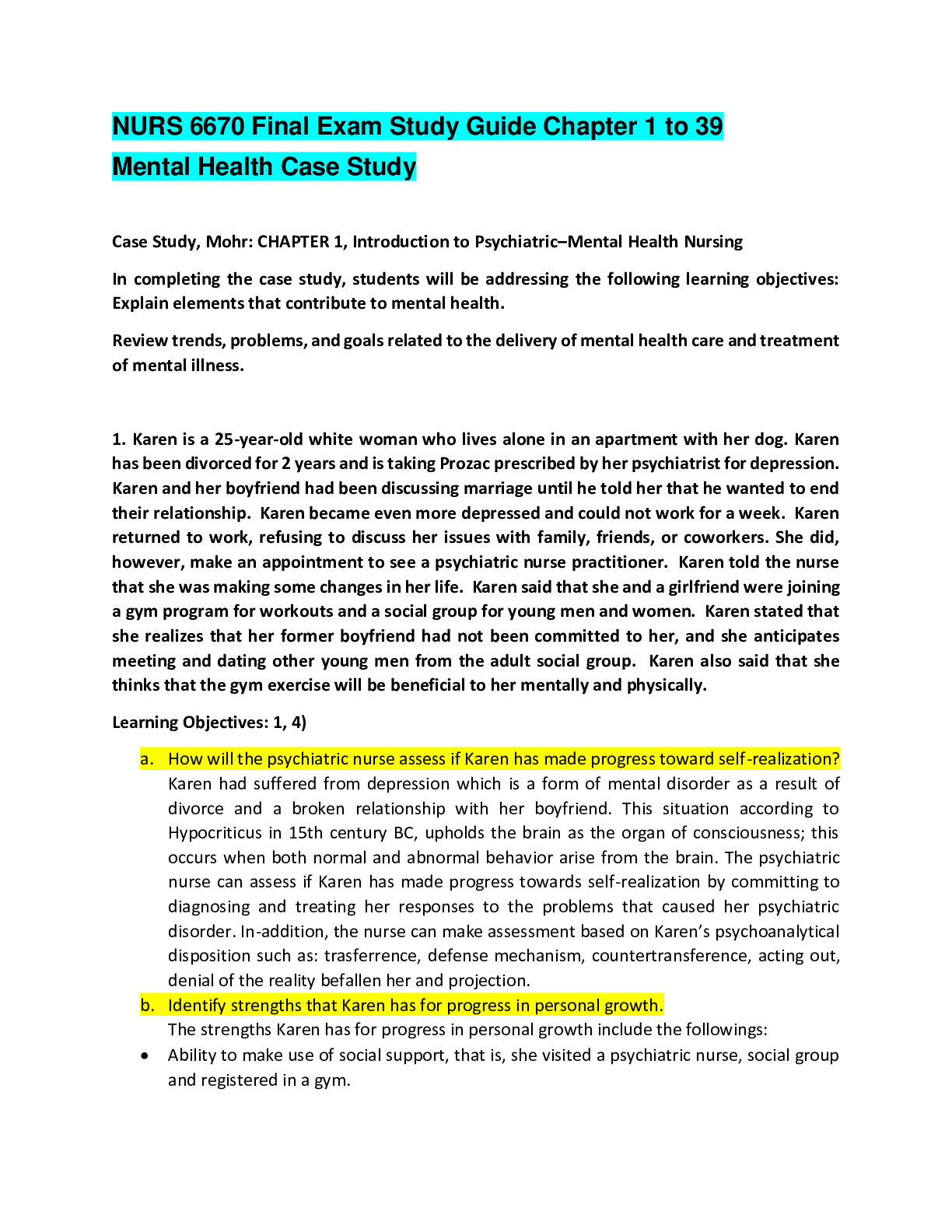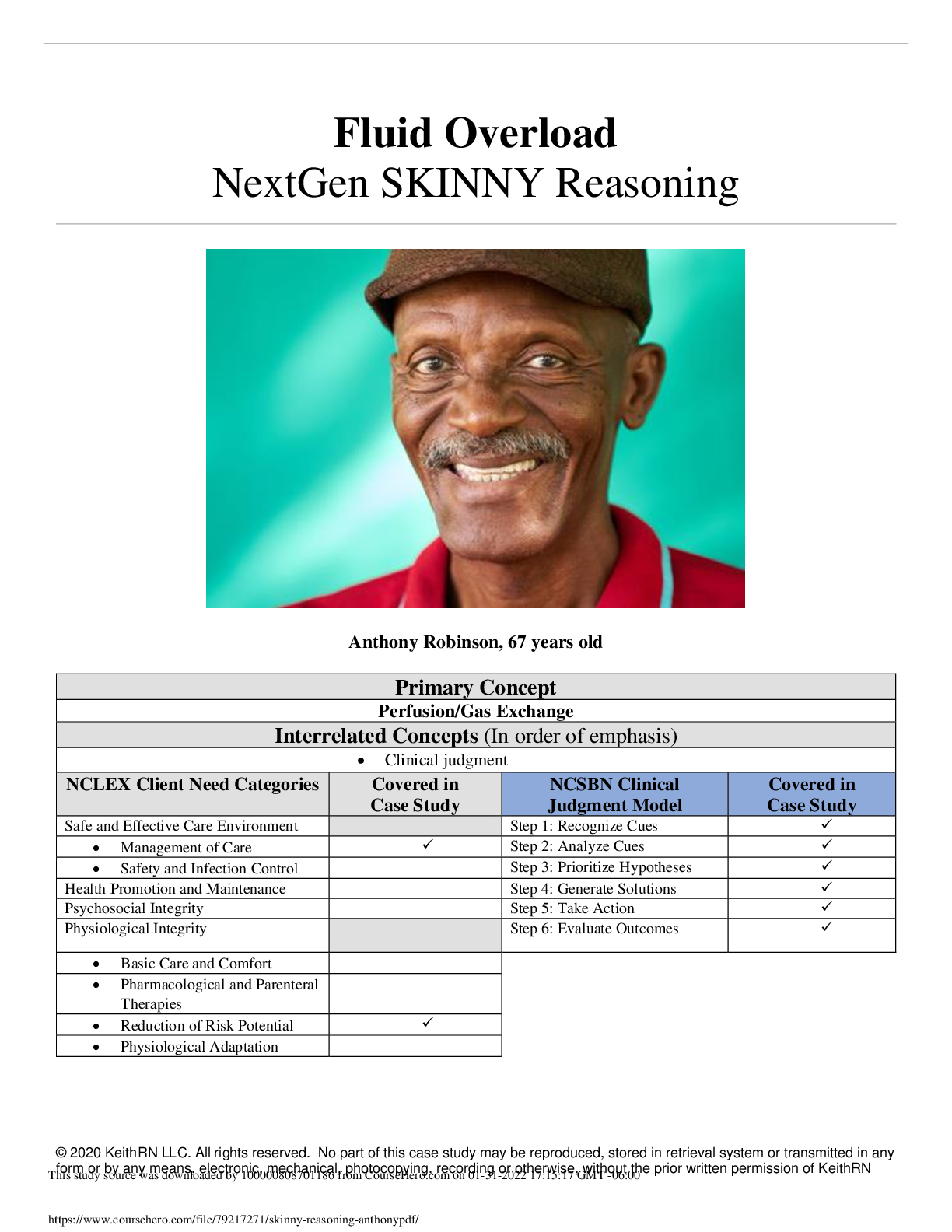*NURSING > CASE STUDY > BI 201 BURN CASE STUDY (All)
BI 201 BURN CASE STUDY
Document Content and Description Below
9. What long-term problems may the patient have as a result of extensive scar tissue formation over her trunk and her right elbow? Answers: 1. There are 3 different kind of burns a patient could... suffer from first-degree, second-degree, and third-degree burns. A first-degree burn only get the first layer of the skin and only causes redness, swelling, and pain. A first-degree burn will heal in a couple days without medical treatment needed. The second-degree burns usually burn the two layers of skin the epidermis and dermis. The symptoms of these burns usually have the same symptoms of the first-degree, but you can add blisters to the list. These burns usually require medical attention to due to potential scarring and infections. Third-degree burns are full thickness burns involving the entire thickness of the skin. The skin color is usually gray-white, cherry-red, or black. The nerve endings are destroyed in this type of burn. 2. Angela was pain free due to her skin having third-degree burns, Third-degree burns destroy a patient's nerve endings leaving a patient pain-free or in mild-pain. 3. Angela's blood pressure was low due to her losing her fluids when the skin was burned. The patient's heart rate was also high due to the heart not recieving enough fluid and needing to work hard and pump faster to try to get blood to the burnt sections of the body. 4. It is important to get Angela fluid to help her blood pressure to rise and to keep the patient's skin and organs hydrated so they do not shut down. 5. A "Broad Spectrum Antibiotic" covers almost any kind of infection or bacteria that can be harmful to a patient. There are some infections and bacteria that are becoming more immune to these broad spectrum antibiotics though. There are bacteria that live on the skin and once the skin is broken or torn the bacteria can get in an invade the body, which will be hazardous to that patient. 6. Skin grafts can be really risky to give to a patient due to possible rejection and skin grafts are only usually given to patient's that suffer from third-degree burns. Skin grafts can not grow well due to scar tissue. 7. Patients that are confined to a bed or chair and are not moved regulary can become susceptible to decubital ulcers. They are usually on a patient's back, back of legs or on the patient's buttocks. The long periods of time without moving causes the patient to have breakdown which causes the ulcers. [Show More]
Last updated: 1 year ago
Preview 1 out of 2 pages
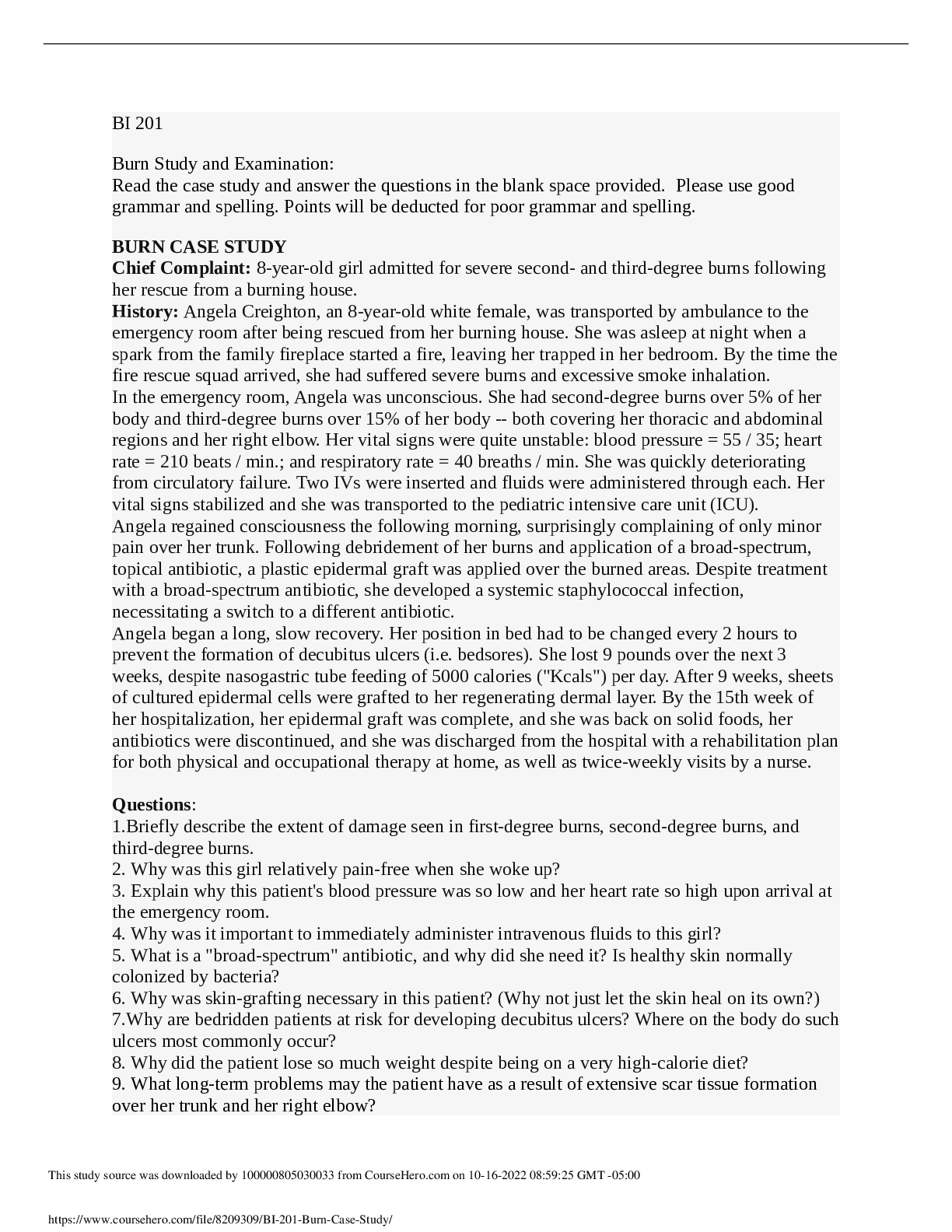
Also available in bundle (1)

PACKAGE OF ALL THE LATEST IHUMAN CASE STUDY 2019-2023 WITH A NEW AND REVISED VERSION AND STUDY
PACKAGE OF ALL THE LATEST IHUMAN CASE STUDY 2019-2023 WITH A NEW AND REVISED VERSION AND STUDY
By CLAVIN 1 year ago
$21
11
Reviews( 0 )
Document information
Connected school, study & course
About the document
Uploaded On
Oct 16, 2022
Number of pages
2
Written in
Additional information
This document has been written for:
Uploaded
Oct 16, 2022
Downloads
0
Views
40

